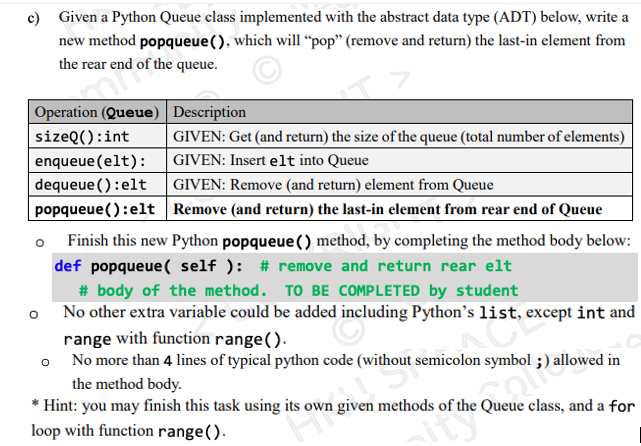

And Finally update the last node pointer to the next of last node pointer.įirst(): Return the first element from the queue without removing it. But if the elements are in the queue, then create one node with value given by the user, store it in the next of last pointer, also make the prev pointer of the next of last node pointing towards the last node. In enqueue operation, if the queue is empty then create one node with value given by the user and point both head and last on it. And Finally update the last node pointer to the next of last node pointer.ĭequeue(): Remove and return the first front-end element of the queue. Queue Operations to implement the queue using doubly linked list in PythonĮnqueue(): Add an element to the rear-end of the queue. Pointer to the previous node of the sequence in the linked list.Pointer to the next node of the sequence in the linked list.The node in the doubly linked list has three parts:

In the queue, the insertion operation is known as enqueue in which an element is inserted into the rear(back) end of the queue, and the deletion operation is known as dequeue in which an element is removed from the front end of the queue.Ī doubly linked list is a type of linked list that contains both the pointers pointing toward the next node and towards the previous node. the element which is inserted first will be removed first. What is a Queue?Ī queue is a linear data structure that works on the principle of FIFO(First in First out) i.e. In this blog, we will discuss a queue using doubly linked list in Python. The keys represent names of individuals, and the corresponding values contain their associated shipping addresses.A queue is an ordered collection of elements in which the addition of one element happens at one end known as REAR and the removal of existing elements occurs at the other end known as FRONT. To illustrate this, let's first construct a simple address book dictionary. Let's explore how we can retrieve these elements. Together, these keys, values, and items collectively form the core structure of a dictionary. The combination of these key-value pairs is represented in the form of tuples, known as dictionary items. The data associated with each key is called a value, and can be mutable.Īny data type, such as a string, number, list, or even another dictionary, is an acceptable value. Keys can be of any immutable type (e.g., strings, numbers, tuples). Building Blocks of a DictionaryĪ key in a dictionary serves as a unique identifier that allows us to locate specific information. Unlike ordered or indexed sequences (such as lists), dictionaries are mappings that assign a distinct name or key to each element. In terms of Python's data structures, dictionaries are containers that can hold other objects. The dictionary's key is similar to a word that we would like to search for, and the value is like the corresponding definition of the word in the dictionary. You can visualize a Python dictionary by thinking about traditional physical dictionaries. A Brief Anatomy of a Dictionary What Is a Dictionary in Python? We will review illustrative examples and discuss the appropriate contexts for each approach. In this article, we will take a look at different approaches for accessing keys and values in dictionaries. It is an unordered collection of key-value pairs, where the values are stored under a specific key rather than in a particular order. A dictionary in Python is an essential and robust built-in data structure that allows efficient retrieval of data by establishing a relationship between keys and values.


 0 kommentar(er)
0 kommentar(er)
